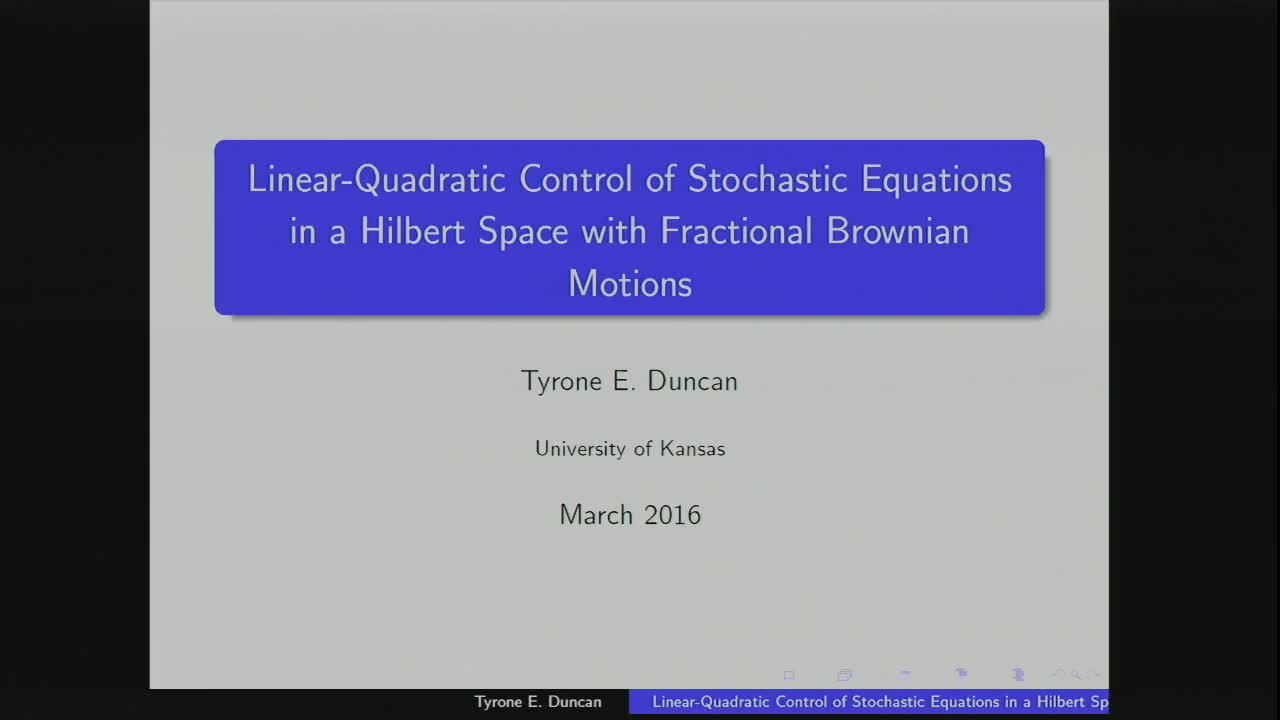Linear-Quadratic Control of Stochastic Equations in a Hilbert Space with Fractional Brownian Motions
Presenter
March 14, 2016
Keywords:
- control of stochastic PDEs, optimal control, fractional Brownian motions
MSC:
- 60G22
Abstract
Fractional Brownian motions (FBMs) denote a family of Gaussian processes indexed by the Hurst parameter H ∈ (0, 1) that can be empirically justified as models for noise in many physical systems. While this family includes Brownian motion (H = 1/2), the other Gaussian processes in this family are neither Markov nor semimartingales. Thus many of the traditional stochastic methods for the solution of control problems are not available. From empirical evidence the subfamily of fractional Brownian motions with H ∈ [1/2, 1) that are considered here is more appropriate for modeling noise than the fractional Brownian motions with H ∈ (0, 1/2). Some methods are given that solve linear-quadratic control problems for equations in a Hilbert space that are driven by fractional Brownian motions with H ∈ [1/2, 1), e.g.
dX(t) = AX(t)dt + BU(t)dt + dW(t)
X(0) = xo
where A is the generator of a strongly continuous semigroup, X(t) ∈ H, a
Hilbert space, U(t) ∈ U, a Hilbert space, B ∈ L(U, H) and W is a FBM with H ∈ [1/2, 1). The time horizon can be finite or infinite.
A second linear-quadratic control problem for stochastic equations in a Hilbert space is considered where there is a multiplicative Gaussian noise W and the family of controls is restricted to bounded linear feedback control
operators,K,
dX(t) = (A(t)X(t) + B(t)K(t)X(t))dt + σ(t)X(t)dW(t)
X(0) = x0
(A(t), t ≥ 0) is a family of closed, unbounded operators, (W(t), t ≥ 0) is a real-valued Volterra-type Gaussian process, and K is to be determined. Since the noise is correlated, the feedback K is not the one for a Brownian motion. A Riccati equation different from the one for Brownian motion arises
naturally for this problem. Some examples of stochastic partial differential
equations are given that satisfy the assumptions for both models.
This is joint work with B. Maslowski and B. Pasik-Duncan.
